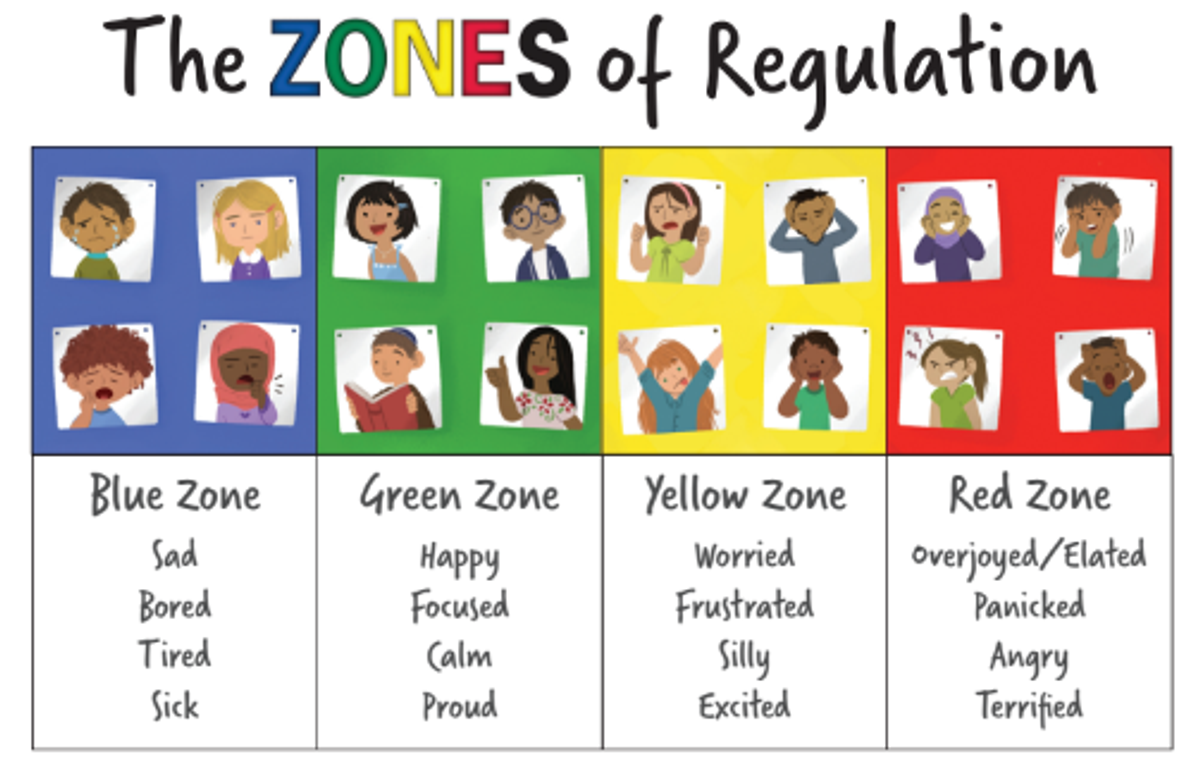Wellbeing & Inclusion
September 2024

Wellbeing & Inclusion
September 2024
At NBC the Social and Emotional Learning (SEL) teachers take a weekly SEL class with each P-6 grade on everything from emotional literacy to character strengths to gender and identity. This team is a part of our College Inclusion team led by the Assistant Principal of Inclusive Practice, Kylie Armstrong, and the Personal and Social Capabilities Lead Teacher, Griffin Errey.
The aim of the SEL program is to support all students to understand their emotions and develop strategies to regulate to ensure they are ready to learn and succeed.


Kylie Armstrong
Assistant Principal of Inclusive Practice


Griffin Errey
Social Capabilities Lead Teacher
At NBC we support all students to understand their emotions and how to develop regulation strategies to ensure they are ready to learn.
What are the Zones of Regulation?
In our early years we teach students the Zones of Regulation to support students to identify how they are feeling, then name that feeling and develop strategies to emotionally regulate. This approach supports students to become emotionally literate as they progress through their schooling and provide them with lifelong strategies to be successful.
To support the connection between what we learn at school to home here is some more information about the Zones of Regulation. You may even wish to place a Zones of Regulation poster on your fridge at home to refer to!


The Zones of Regulation is an approach used to teach self-regulation. It gives children language and strategies to express their needs, emotions and impulses in order to successfully engage in their environment.
For a quick guide on Zones of Regulation, watch this video!
The Zones are made up of four colours that represent different feelings and emotions. They are Blue Zone (moving slowly), Green Zone (good to go), Yellow Zone (move cautiously) and Red Zone (stop). Students move themselves in and out of different Zones as their emotions change throughout the day.
The Blue Zone


The Blue Zone is the low zone. It’s when our heart beat is slow and is associated with feelings such as tired, bored, flat or sick. It feels cold, lazy and lethargic. The Blue Zone does not include upset. When we are upset often our hearts are beating faster, we might be crying or angry and our faces might be flushed.
The Blue Zone is lower than that. The ‘down in the dumps’ kind of feeling. The strategy we pick to get us out of the Blue Zone depends on which emotion we are feeling. For some of us, identifying our emotions are easy. But many young people are encouraged to suppress or hide their emotions. It is very difficult to learn about how you are feeling if you are hiding from it.
Often the easiest way to pick the emotion we are feeling is by recognising it when we see it. Using faces and emojis is a terrific way for a child to tell you how they feel.
While it is perfectly normal and expected to be in the Blue Zone at different times, it’s not a particularly enjoyable Zone. We might be in the Blue Zone first thing in the morning or after a busy day. We might experience longer periods of Blue Zone the deeper into Term we get as get closer to holidays. We might have experienced genuine heartbreak or loss and be in the Blue Zone for days as a result. All of these feelings are perfectly normal and expected. But when you want to get out of the Blue, it’s important to know how.
Strategies
Picking which strategy you need requires you to figure out why you’re in the Blue Zone, and if you’re ready to move out of it. Sometimes, if you have lost someone. the Blue Zone is right where we need to be. But it’s always best to be Blue with someone than Blue alone.
The Green Zone


The Green Zone is where we want to get to.
It’s our Go Zone. The Green Zone might be happy, optimistic, or proud. But it might also just be calm. Sometimes you might not be feeling any emotion particularly strongly. That’s the Green Zone.
When you aren’t distracted by heavy thoughts and feelings you’re in the best place to succeed! The Green Zone is where we work hard and get the job done.
It’s where we can best help others and contribute to our team, family and community. It’s where the teacher want to see their students in class.
Once we are in our green zone we can stop focussing inwardly and focus on the world around us. The Green Zone helps us to be present in the moment without worrying about the past or the future. It is not possible or practical to live entirely in the Green Zone. Life is all about ups and downs. However, when we have goals, tasks to accomplish or people that depend on us, getting to the Green Zone can be very helpful.
There are no strategies for when you are in the Green Zone because you’re where you want to be. Its Go time! However, you can help others get to their Green Zone. Kindness is the best way to boost someone else’s mood! Do something nice for someone and you will spread that Green Zone around.
The Yellow Zone


The Yellow Zone is the next zone up from the Green Zone. Where the Green Zone is calm and ready for action, the Yellow Zone is full of thoughts and feelings that might prevent us from focusing on the task at hand. The Yellow Zone includes lots of different emotions, but the common thread is that our heart is beating faster, our feelings are becoming intense, and our mind is busy. It is like a yellow traffic light, telling us to slow down or proceed with caution.
As with all emotions, they have their uses. To be in the Yellow Zone isn’t a bad thing, in fact, it can feel great. Excited anticipation of a birthday or Christmas is Yellow Zone. So is seeing your friends after a long period stuck at home. Yellow Zone can also inspire or motivate you. Feeling upset or jealous after failing at something can make you work harder to get better. Feeling nervous or scared of something can motivate us to find safety. Frustration lets us know it’s time to leave the situation before you become angry and make a bad choice.
All of our emotions are useful in the right situations. In fact, they are our brain’s way of helping us to survive and thrive. Unfortunately, we often experience Yellow Zone emotions in unhelpful times. Feeling nervous before we talk to someone new, feeling upset when we lose a class game or getting frustrated at a maths problem don’t help us. So it is important to have strategies to get out of the Yellow Zone when needed. Think of these strategies as a way of saying “thanks feelings, but I’ve got it from here”.
Strategies
The basic part of Yellow Zone is that our minds are busy and our hearts are beating quickly. We want to change both of those things to come back down to ensure we are ready to learn. Here are two types of strategies:
Sensory: There are endless sensory aids you can use from weighted blankets, to slime, to bouncing on a gym ball. The key with sensory strategies is to feel what your body wants to do. It might want to move, push, pull, jump be squashed or covered, you might like to take away sound or light or move your hands or fingers to squeeze, click, squish or turn something. There is no right or wrong answer and there is a sensory aid for every need. You might just want a warm hug or a cool breath outside. You can often make your own sensory devices at home, or otherwise there are websites and stores dedicated to exactly this. Have a look at sensoryoasisforkids.com.au or stores like Kmart or Big W.
The Red Zone


Finally, the Red Zone is where we go when we didn't proceed with caution or slow down. The Red Zone is anger, aggression, terror and elation. Essentially, it's losing control and submitting to your emotions.
The Red Zone is where we make our worst choices, and when logic and sense are thrown out the window. Like all the zones, it's perfectly normal and expected to visit the Red Zone.
People get on our nerves, we might be in danger, we might be hurt physically or emotionally. Maybe too many things have piled up on our plates or we have too much excitement to contain. However, the Red Zone can be useful. We find out our limits and what we can put up with. We find out what makes us angry or terrified. We find out what happens if we don't make smart emotional choices. We learn a lot about ourselves and our values when we visit the Red Zone. But it doesn't feel good. It feels out of control, exposed and raw. We might make choices that damage our friendships or hurt the people around us.
The strategies to get out of the Red Zone are simple. Stop what you are doing. Walk away and take deep breaths. Give yourself time to breathe. Sit somewhere quiet and allow yourself to feel calm.
In our Learning Spaces
In most of our P-6 classrooms, the four colours of the Zones are displayed so students can map how they are feeling. As students progress through the years we adapt our emotional check in tools as students become more independent to emotionally regulate.
The Zones acknowledges that emotions in all four Zones are healthy and important, which is an important part of the approach. It also enables communities to use a common language to support children in understanding their emotions.
At home
You can use the same language and strategies at home. Asking children to reflect upon how they feel and give labels to those emotions is critical to them then being able to self-regulate. For example, if a child is frustrated with their sibling for using their toys, encourage them to recognise that emotion as frustration and then put into practice the strategies they can use to help calm. Calming strategies are best discussed before stressful situations arise. Have a discussion with your family around what works for each of you to help calm, so you have ready-made approaches when we all inevitably get frustrated, worried, angry, upset, jealous, etc.
RUOK Day is an important day, focussed around a very simple question "Are you okay?" - a question our team gets to ask each and every day.








At NBC this year, we have seen our students grow in their capacity to check in with, and support their peers, as well as growing in their own state of wellbeing. As a Wellbeing Team, we will continue to foster these social skills and abilities by delivering many wellbeing focussed, social emotional activities every day.
Some of these activities that have run and facilitated are:
Next term promises to deliver many more amazing wellbeing activities across the college, and we are looking forward to having many more students involved in these activities.


Nathan Brock
College Wide Wellbeing Leader
Social Worker
Wexford Campus